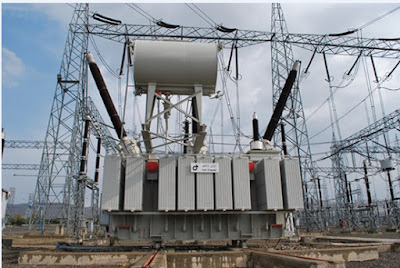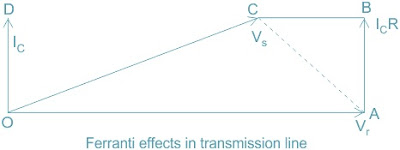Ferranti Effect in a transmission Line is reduced using voltage compensation which in turn is accomplished by Shunt Reactor. Shunt Reactor is just like a Transformer but it has only primary and no secondary. Shunt Reactor is connected to all the three phases i.e. R, Y and B phase. Figure below shows a Shunt Reactor. Isn’t it look like a Transformer? Yes..it does…
For better understanding we will consider different aspects of Ferranti Effect.
What is Ferranti Effect?
A long transmission line can be considered to be composed of a considerably high amount of capacitance and inductor distributed across the entire length of the line. Ferranti Effect occurs when current drawn by the distributed capacitance of the line is greater than the current associated with the load at the receiving end of the line which occur during light or no load.
This capacitor charging current leads to voltage drop across the line inductor of the transmission system which is in phase with the sending end voltages. This voltage drop keeps on increasing additively as we move towards the load end of the line and subsequently the receiving end voltage tends to get larger than applied voltage leading to the phenomena called Ferranti Effect in power system.
During no load or light load condition, the reactive power generated at a point on the Transmission Line will be more than the reactive power absorbed and therefore the voltage at that point will rise. Mind that during no load or light load condition the line capacitance will dominate to inductance.
The % Rise in voltage in an EHV Transmission Line depends on the square of its length of line.
% dV is approximately = 0.55×(L/100)2
where L=line length in km and dV = Change in Voltage
If it’s a short line no control is needed as the voltage rise will not be significant during light load or no load condition i.e. Ferranti Effect will not be dominating.
For a medium length line of 250 km the rise in voltage will be about 9.4% and it is above tolerance limit of 5% for 400 kV and above.
Thank you!


This is helpful. Thank you very much.
Excellent matter,,,and it is to easy understand normal students also,,,tnku u so much
Thank you very much Govardhan! Please share this page if you really like it.